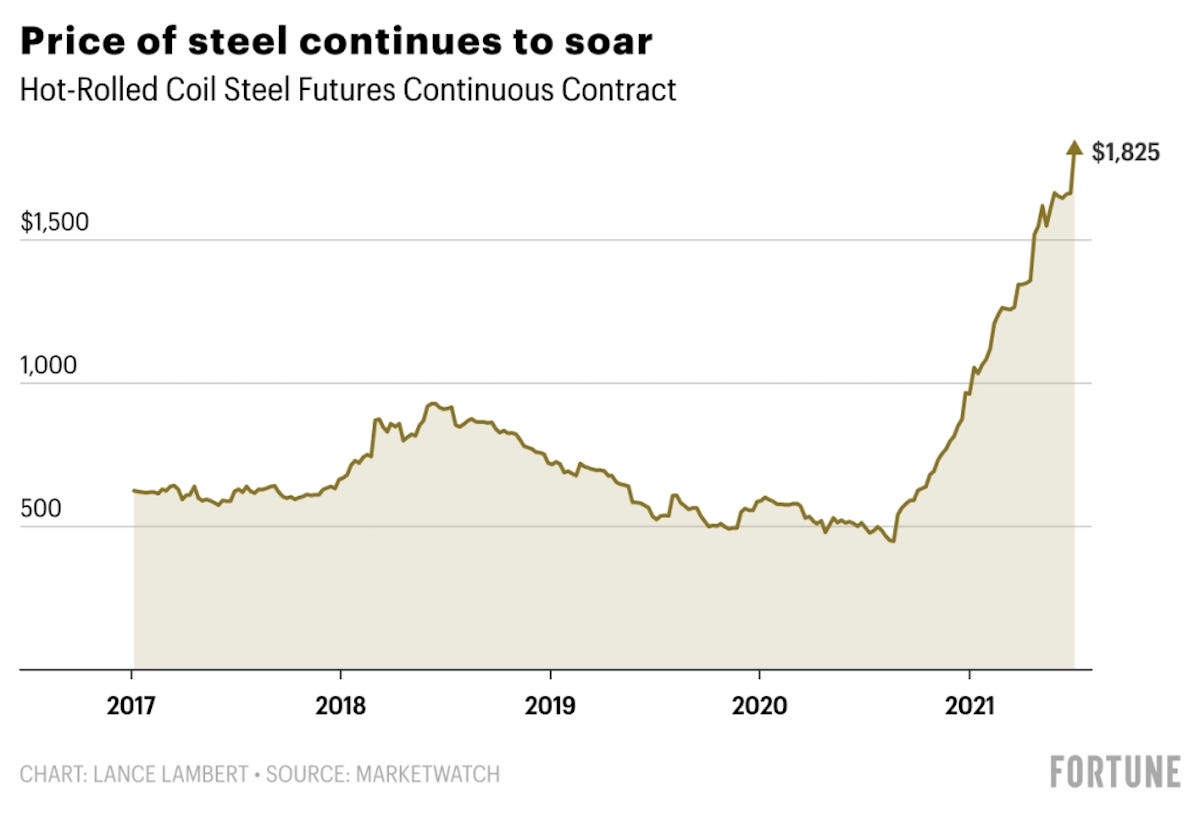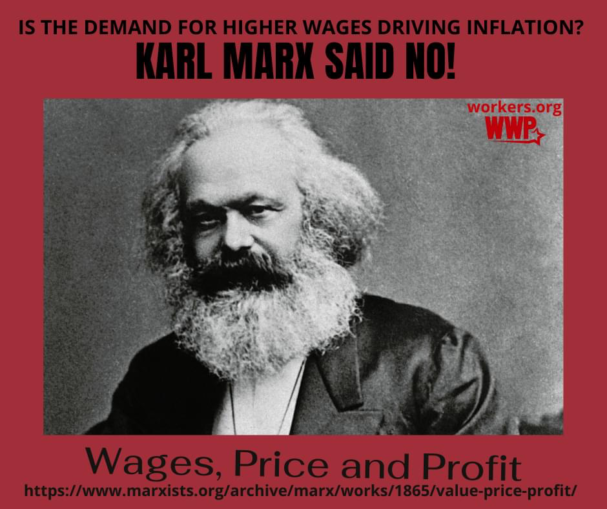Have you noticed that everything seems to be getting more expensive? Maybe things you used to buy for a certain price are now costing you more than before. Well, you’re not alone! Many people are wondering: why is everything getting more expensive? Let’s dive into this topic and uncover the reasons behind the rising prices.
In our fast-paced world, it’s hard not to notice that the prices of everyday goods and services are on the rise. From groceries to gas prices, it feels like our wallets are feeling the pinch. So, what’s causing this upward trend in costs? One major factor is inflation, which happens when the general level of prices for goods and services increases over time. It affects the purchasing power of your money, meaning you can buy fewer things for the same amount.
Another reason why prices are climbing higher is the cost of production. Companies face increased expenses for labor, raw materials, and transportation, and these costs are passed on to consumers. Additionally, the global economy plays a crucial role in price fluctuations. When the demand for goods and services exceeds the supply, prices tend to go up. And with the ever-changing dynamics of supply chains, even a small disruption can have a ripple effect on prices.
So, the next time you wonder why everything seems to be getting more expensive, remember that factors like inflation, production costs, and the global economy all contribute to these rising prices. It’s a complex interplay of forces that impact our daily lives. But understanding the reasons behind these price hikes can help us navigate this ever-changing economic landscape. Stay tuned to learn more about specific industries and how they are affected by these trends in our upcoming articles!
Have you noticed that prices seem to keep rising? It’s not your imagination. Numerous factors contribute to this trend. Demand for goods and services, inflation, and supply chain disruptions all play a role in why everything is getting more expensive.
Inflation causes the value of money to decrease over time, meaning it takes more money to buy the same goods. Additionally, increased demand and reduced supply can drive prices up. Supply chain disruptions, such as transportation issues or higher production costs, can also contribute to price increases.
While it’s frustrating, understanding these factors can help you navigate the price hikes and make informed purchasing decisions.

Why is Everything Getting More Expensive?
Prices of goods and services seem to be increasing at an alarming rate. From groceries to housing, everything appears to be getting more expensive. This phenomenon has been a cause for concern for individuals, families, and even economies as a whole. In this article, we will delve into the factors driving this trend and explore why everything is becoming more costly. Understanding the reasons behind rising prices is crucial for informed decision-making and navigating the current economic landscape.
1. Inflationary Pressures
Inflation, the general increase in prices, is one of the primary factors contributing to the rising costs of goods and services. When there is more money circulating in the economy, people have more to spend. As demand increases, businesses can charge higher prices. Additionally, when the cost of raw materials, wages, or transportation increases, companies often pass on these costs to the consumers. This creates a cycle of rising prices, as businesses strive to maintain profitability.
Inflation can be influenced by various factors such as government policies, changes in interest rates, or global economic conditions. Central banks play a crucial role in managing inflation by adjusting interest rates, controlling the money supply, and implementing other monetary policies to stabilize prices. However, achieving the delicate balance between stimulating economic growth and keeping inflation in check can be a challenging task.
To protect themselves from the eroding value of money, consumers can employ strategies such as investing in assets that appreciate over time or seeking higher-yield savings accounts. It is also important for individuals to budget effectively and prioritize their spending to adapt to the rising costs.
2. Supply and Demand Dynamics
The dynamics of supply and demand have a significant impact on prices. When the demand for a particular product or service exceeds the available supply, prices tend to increase. This can occur due to various reasons, such as a surge in consumer preferences, scarcity of resources, or disruptions in production or distribution channels.
For example, if there is a sudden increase in demand for a specific product, manufacturers might struggle to keep up with production, leading to higher prices. Similarly, if the supply of a critical raw material is disrupted, such as a crop failure or an increase in oil prices, the costs of related products can skyrocket.
Global events, geopolitical tensions, natural disasters, and pandemics can all impact supply chains, causing disruptions and contributing to price hikes. Understanding these factors can help consumers anticipate and plan for potential price increases, making informed purchasing decisions and considering alternatives when necessary.
3. Rising Manufacturing and Production Costs
The costs associated with manufacturing and production have a direct impact on the prices of goods. When the cost of raw materials, labor, or energy increases, manufacturers often pass on these additional expenses to consumers.
Raw materials, such as metals, oil, and agricultural commodities, are subject to price fluctuations due to factors such as global demand, geopolitical tensions, climate conditions, and supply chain disruptions. Increased labor costs, influenced by factors like minimum wage hikes and collective bargaining agreements, can also contribute to higher production costs.
Furthermore, energy costs, including electricity and fuel, have a significant influence on manufacturing expenses. Fluctuating oil prices, geopolitical tensions in oil-rich regions, and the implementation of carbon taxes or emission regulations can all contribute to rising energy costs, which are ultimately reflected in the prices of goods.
4. Impact of Technological Advancements
While technological advancements have undoubtedly brought numerous benefits and conveniences, they can also contribute to rising prices. Innovations often come at a cost, both in terms of research and development as well as the production of cutting-edge technologies.
Companies invest significant resources in developing new technologies, which are then incorporated into their products. These advancements add value to the goods or services, but they also increase the overall cost of production. From the latest smartphones to state-of-the-art medical devices, consumers often find themselves paying a premium for the latest technological innovations.
However, it is important to note that technological advancements can also lead to improved efficiency and productivity in certain industries, potentially offsetting some of the cost increases. For example, automation and robotics can reduce labor costs and enhance production capacities, helping to mitigate the impact on prices.
5. Influence of Global Economic Factors
The global economy is an interconnected web of countries and markets that influence each other in various ways. Economic conditions and events in one part of the world can have far-reaching consequences, impacting prices worldwide.
Factors such as currency fluctuations, trade policies, and geopolitical tensions can all contribute to price volatility. For example, if a country experiencing political turmoil undergoes a depreciation of its currency, the relative value of imports from that country can increase, leading to higher prices for imported goods.
Furthermore, global supply chains and the interconnectedness of industries mean that disruptions in one sector can have a ripple effect on other sectors. For instance, a shortage of computer chips can affect the production of automobiles, smartphones, and other electronic devices, leading to an increase in prices across multiple industries.
6. Impact of Market Competition
The level of competition within a market can influence pricing dynamics. In highly competitive industries, businesses often strive to attract customers by offering lower prices or competitive deals. However, in markets with limited competition or dominated by a few key players, the ability to dictate prices increases.
When a company has substantial market share or brand recognition, it can exert more control over the prices of its products or services. This can result in higher prices, particularly if customers perceive the brand as offering superior quality or unique features.
Understanding market dynamics and exploring alternative options can help consumers find better deals and navigate price increases. Comparison shopping, researching customer reviews, and considering alternative brands or products can help individuals make informed decisions and find the best value for their money.
The Impact on Consumers
The rising costs of goods and services have a significant impact on consumers. Individuals and families are often forced to allocate a larger portion of their budgets to essentials such as housing, healthcare, and education. Discretionary spending on leisure activities and non-essential items may be reduced as people prioritize their limited resources.
For low-income households, the impact can be even more severe, as higher prices erode their purchasing power and ability to meet basic needs. Rising inflation can lead to a decrease in the standard of living and contribute to income inequality.
However, it is not all doom and gloom. Understanding the factors driving price increases can empower consumers to make informed choices and adapt their spending habits. Budgeting effectively, seeking out cost-saving opportunities, exploring alternatives, and staying informed about market trends can all help individuals mitigate the impact of rising prices.
Addressing the Issue
While there is no quick fix to reverse the trend of rising prices, various measures can be taken to address the issue at different levels. Governments can implement policies aimed at controlling inflation and ensuring fair competition in the market. These include strategies such as price controls, subsidies, and antitrust regulations.
At an individual level, consumers can employ several strategies to manage their expenses. Some approaches include budgeting, reducing discretionary spending, seeking out cost-saving opportunities such as discounts or coupons, and exploring alternative brands or products that offer better value for money.
Businesses also play a role in managing prices effectively. They can focus on enhancing productivity, negotiating favorable contracts with suppliers, adopting sustainable practices to reduce raw material and energy costs, and investing in innovation to improve efficiency.
Conclusion
The rising costs of goods and services can be attributed to multiple factors, including inflation, supply and demand dynamics, increased manufacturing and production costs, technological advancements, global economic factors, and market competition. These factors intertwine to create a complex ecosystem in which prices continue to rise.
While the impact on consumers can be significant, individuals and households can adapt and mitigate the effects by making informed decisions, adjusting their spending habits, and staying informed about market trends. Governments and businesses also have a role to play in implementing measures that promote fair competition, control inflation, and manage costs effectively.
Understanding the reasons behind rising prices is essential for individuals, businesses, and policy-makers. By doing so, we can navigate the challenges posed by increasing costs, maintain our standard of living, and make strategic choices that align with our financial goals and priorities.
Key Takeaways: Why Is Everything Getting More Expensive
- 1. Inflation causes prices to increase over time.
- 2. Increased demand for goods and services can drive up prices.
- 3. Supply chain disruptions can lead to higher production costs.
- 4. Government policies and regulations can influence prices.
- 5. Global economic factors like exchange rates can impact prices.
Frequently Asked Questions
About rising costs and increasing expenses in today’s economy
1. What factors contribute to the rising prices of goods and services?
The rising prices of goods and services can be attributed to various factors. One significant factor is inflation, which refers to the general increase in prices over time. When the cost of raw materials, labor, and transportation increases, businesses often pass on these additional expenses to the consumers. Additionally, changes in supply and demand can also impact prices. If the demand for a particular product exceeds its supply, prices tend to rise.
Moreover, currency fluctuations and global economic conditions can play a role. A weak domestic currency can make imports more expensive, while factors like trade tariffs or natural disasters affecting the supply chain can also lead to price increases. It’s important to note that these factors are interconnected and can influence each other, resulting in a complex effect on prices.
2. How does wage growth affect the cost of goods and services?
Wage growth can impact the cost of goods and services in several ways. When wages increase, businesses may choose to increase the prices of their products or services to offset the higher labor costs. Higher wages also put more money in consumers’ pockets, leading to increased demand and, subsequently, higher prices.
Furthermore, businesses facing higher labor costs may implement cost-cutting measures such as automating processes or reducing employee benefits. These adjustments can also contribute to increased prices as companies strive to maintain profitability. The relationship between wage growth and pricing is complex, influenced by multiple factors and the specific dynamics of each industry.
3. How does government policy impact the cost of living?
Government policies can have a significant impact on the cost of living. Policies related to taxation, minimum wage, and regulations affect the business environment, which in turn influences the prices of goods and services. For instance, an increase in taxes on certain products or industries can lead to higher prices for those goods or services.
Government policies also play a role in areas such as healthcare, education, and housing affordability. Changes in regulations or funding allocations in these sectors can directly impact costs, making them more or less expensive for individuals and families. Additionally, monetary policies set by central banks can affect inflation rates and the overall cost of living. Government intervention in the economy is a crucial aspect to consider when examining the rising expenses experienced by individuals and households.
4. How does globalization contribute to the rising cost of living?
Globalization impacts the cost of living in various ways. One of the main effects is the increased competition in the global market. While this can lead to lower prices for certain goods and services, it can also result in higher costs for others. For example, companies that outsource labor to countries with lower wages may be able to offer cheaper products, but industries that rely on raw material imports may face increased costs due to transportation and trade fees.
Additionally, globalization can lead to income inequality, as certain regions and industries benefit more from the global market than others. This can result in higher prices for goods and services in areas with higher concentrations of wealth and economic activity. Overall, the interconnectedness of economies on a global scale can contribute to the rising cost of living experienced by individuals and communities.
5. How can individuals mitigate the impact of rising prices?
While individuals may not have control over macroeconomic factors, there are steps they can take to mitigate the impact of rising prices. One key aspect is budgeting and financial planning. By creating a monthly budget, individuals can track their expenses and identify areas where they can cut costs or find more affordable alternatives.
Another strategy is to prioritize needs over wants. It’s essential to differentiate between essential expenses and discretionary spending. By focusing on meeting essential needs first and making conscious choices about discretionary spending, individuals can better manage their finances in the face of rising prices. Additionally, seeking out discounts, comparing prices, and taking advantage of loyalty programs can help individuals save money on their purchases. Finally, investing in skills development and education can enhance employability, potentially leading to better job opportunities and increased earning potential.

Why is everything getting so expensive?
Summary
It’s no secret that things are getting more expensive, and there are a few key reasons for this. One of the main factors is inflation, which is when the general level of prices for goods and services rises over time. This means that the same amount of money buys you less than it used to. Another reason is increased demand, as more people want the same products and services. This can drive up prices. Additionally, the cost of production plays a role, as companies often have to pay more for materials, labor, and transportation, and these expenses are passed on to consumers. Lastly, changes in government policies and taxes can also impact prices.
So, while it may be frustrating to see everything getting more expensive, it’s important to understand the underlying factors that contribute to this. Inflation, increased demand, production costs, and government policies all play a role in why we’re seeing higher prices. It’s essential to be aware of these factors and to manage our finances wisely in order to adapt to these changes.






